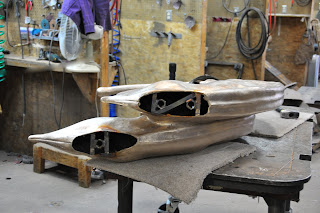Filling in the dirt and landscaping around the completed plinth.
The Bean Pods are installed. This completes the process that was begun in October 2009 and took 8 months to complete from beginning the commission to installation.
Special thanks go out to Jody Wagner, Cliff, and the crew of Land Design Landscaping in Oakland, Maryland for all the hard work they did on the installation.
The client, myself, and my wife Shannon.



























 a
a


























